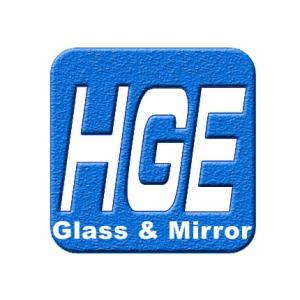deepseek tell me Global Glass Market Trends and Leading Segments in 2025
Global Glass Market Trends and Leading Segments in 2025

deepseek see glass,Global Glass Market,glass from deepseek :
The global glass industry is undergoing transformative changes driven by technological innovation, sustainability imperatives, and shifting demand dynamics. As of 2025, the market is characterized by robust growth in specialized segments such as **photovoltaic (PV) glass, smart glass, and high-performance electronic glass**, while traditional sectors like construction and automotive glass continue to evolve under economic and policy pressures. This article explores the current state of the international glass market, highlights the most promising segments, and analyzes emerging trends shaping the industry.---
**1. Leading Glass Markets in 2025**
#### **1.1 Photovoltaic (PV) Glass: Fueling the Renewable Energy Transition**
photovoltaic glass has emerged as a standout performer, driven by the global push for renewable energy and carbon neutrality goals. PV glass, a critical component in solar panels, enables efficient energy conversion while maintaining durability and transparency. In 2024, China’s PV glass production surged by 54.3% year-on-year, reaching 2.47 million tons, despite price declines due to oversupply. However, market optimism persists, with leading manufacturers like **Xinyi Solar and Flat Glass Group** rebounding strongly in stock valuations, reflecting expectations of long-term demand growth.
The segment’s resilience is tied to policy support, such as the EU’s Green Deal and China’s "dual carbon" targets, which prioritize solar energy infrastructure. By 2029, the global energy-efficient glass market (including PV glass) is projected to reach ¥180 billion ($25 billion), growing at a CAGR of 2.8%.
#### **1.2 Smart Glass: Revolutionizing Building and Automotive Sectors**
Smart glass, which dynamically adjusts light transmission based on environmental conditions, is gaining traction in architecture and automotive applications. Innovations like electrochromic and thermochromic technologies have expanded its use beyond commercial buildings to residential and automotive interiors. For instance, electrochromic smart glass now addresses historical limitations such as UV resistance and faster response times, enabling broader adoption.
The global smart glass market is buoyed by energy-saving regulations and consumer demand for sustainability. In China, cost reductions and advancements in electrically controlled dimming glass have spurred mass adoption in smart homes and electric vehicles. Analysts predict a compound annual growth rate (CAGR) of 8–10% for smart glass through 2030, driven by smart city initiatives and automotive electrification.
#### **1.3 High-Performance Electronic Glass: Enabling Advanced Displays**
Electronic glass, particularly for displays and touchscreens, remains a high-growth niche. With the proliferation of foldable smartphones, augmented reality (AR) devices, and ultra-thin TVs, demand for ultra-thin, durable glass substrates has skyrocketed. Corning’s Gorilla Glass and SCHOTT’s ultrathin glass products dominate this space, catering to tech giants like Apple and Samsung.
China’s electronic glass sector, however, faces challenges in high-end production. While domestic output reached 42,700 tons in 2022, reliance on imports for premium products persists due to technological gaps. This creates opportunities for innovation and partnerships in the global supply chain.
---
### **2. Global Market Trends Shaping the glass industry**
#### **2.1 Sustainability and Regulatory Pressures**
Environmental regulations are reshaping production practices. The **EU’s Carbon Border Adjustment Mechanism (CBAM)** and China’s capacity-swap policies aim to curb emissions by phasing out inefficient furnaces and promoting cleaner technologies. Companies are investing in low-carbon processes, such as hydrogen-fueled melting and recycled glass (cullet) utilization, to align with net-zero targets.
For example, Saint-Gobain and AGC Group have committed to reducing carbon emissions by 30–40% by 2030 through energy-efficient manufacturing and circular economy models.
#### **2.2 Regional Market Dynamics**
- **Asia-Pacific**: Dominates global glass production, accounting for over 60% of output. China remains the largest consumer, driven by construction and automotive sectors, though its growth is tempered by a slowing property market. Southeast Asia, particularly Vietnam and Thailand, is emerging as a hub for PV and automotive glass due to lower labor costs and favorable FDI policies.
- **North America and Europe**: Focus on high-value segments like smart glass and advanced coatings. The U.S. saw a 15% increase in smart glass installations in 2024, spurred by LEED certification requirements.
- **Middle East and Africa**: Investing in solar energy infrastructure, creating demand for PV glass. Saudi Arabia’s NEOM project, for instance, plans to integrate PV glass into urban designs.
#### **2.3 Technological Integration and AI**
Artificial intelligence (AI) is revolutionizing glass manufacturing through predictive maintenance, quality control, and supply chain optimization. For instance, AI-driven defect detection systems have reduced production waste by 20% in leading factories. Smart glass manufacturers are also leveraging AI to enhance user customization, such as adaptive tinting based on real-time weather data.
---
### **3. Challenges and Future Outlook**
#### **3.1 Persistent Challenges**
- **Overcapacity**: Traditional sectors like float glass face oversupply, pressuring prices. In 2024, global float glass prices fell by 10–15%, squeezing margins for producers.
- **Raw Material Volatility**: Pure碱 (soda ash) prices, accounting for 54% of production costs, remain unstable due to geopolitical tensions and supply chain disruptions.
- **Policy Implementation Lag**: While green policies favor PV and smart glass, their translation into tangible demand is slow. For example, China’s property market recovery remains tepid, delaying construction glass demand.
#### **3.2 Strategic Opportunities**
- **Vertical Integration**: Companies like Xinyi Glass are expanding into downstream solar panel assembly to capture higher margins.
- **Niche Applications**: Medical-grade borosilicate glass and radiation-shielding glass for nuclear facilities offer high-profit avenues.
- **Emerging Markets**: Africa’s urban population growth (4.3% annually) signals long-term demand for construction and automotive glass.
---
### **4. Conclusion**
The global glass market in 2025 is marked by a dichotomy: traditional sectors grapple with cyclical downturns, while innovative segments like PV, smart, and electronic glass thrive on technological and policy tailwinds. Sustainability, regional diversification, and AI integration will define the industry’s trajectory. For investors and stakeholders, focusing on high-growth niches and resilient supply chains will be critical to navigating this dynamic landscape.
**References**
- Market size and PV glass trends.
- Smart glass innovations and regional dynamics.
- Challenges in raw materials and policy impacts.
- Technological advancements in AI and manufacturing.
(Note: This condensed analysis summarizes key trends; for detailed data and forecasts, refer to industry reports from Chinairn, Sohu, and Yjbzr.)
 English
English Russian
Russian




